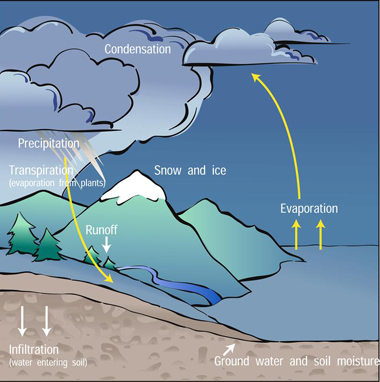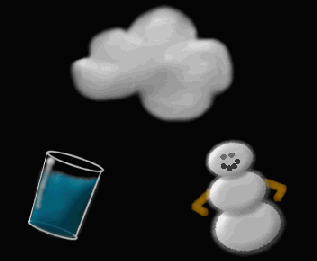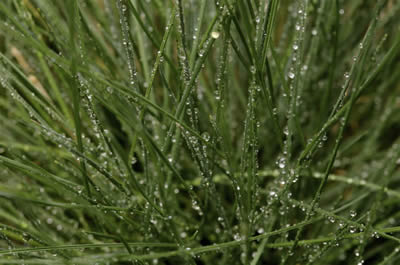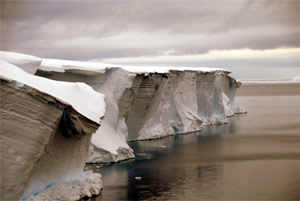Click on image for full size
Copyright University Corporation for Atmospheric Research
Earth's Water Cycle
Water is always on the move. Rain falling where you live may have been water in the ocean just days before. And the water you see in a river or stream may have been snow on a high mountaintop.
Water can be in the atmosphere, at the Earth surface, and even underground. It is recycled over and over through the water cycle. In the cycle, water changes state between liquid, solid (ice), and gas (water vapor).
There are a number of ways that water vapor gets into the atmosphere. Through the process of evaporation some of the liquid water that is at the top surface of the ocean, rivers, and lakes becomes water vapor in the atmosphere. This is the most common way that water vapor forms. Water vapor can also form from snow and ice through the process of sublimation and can be formed by plants through the process of transpiration.
The water vapor rises in the atmosphere and cools forming little water droplets in the atmosphere through the process of condensation. Those water droplets make up clouds. If those tiny water droplets combine with each other, growing larger in size, they will grow too heavy to stay in the air and will fall to the ground as precipitation. Some precipitation falls as rain, and some falls as snow and ice, depending on the temperature of the atmosphere.
Most of the precipitation that falls becomes a part of the ocean or it becomes part of rivers, lakes, and streams that eventually lead to the ocean. Some of the snow and ice that falls as precipitation stays at the Earth surface in glaciers, ice sheets, and snowfields for some time. Some of the precipitation seeps into the ground and becomes a part of the groundwater.
Water stays in certain places longer than others. A drop of water may spend over 3,000 years in the ocean before moving on to another part of the water cycle while a drop of water spends an average of just eight days in the atmosphere before falling back to Earth.















